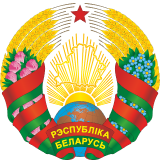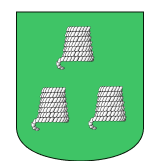The Dobrush region is located in the south-east of Belarus, within the bounds of the Gomel Polesie, on the border of three states. The region borders on the Vetka and Gomel regions /Gomel oblast/, the Novozybkov, Zlynkov and Klimov regions /the Russian Federation/ and the Gorodnia region /Ukraine/.
The region was founded in 1926. The total area is 1,5 thousand square kilometers, of them agricultural lands of 70,739 hectares.
As of January 1, 2005 the population was 44,1 thousand people, of them – 19,381 live in Dobrush. Some 3,752 people are engaged in industry involves, 3,642 - agriculture.
The region is divided into 16 rural and one town councils that comprise 89 settlements and the small town of Terekhovka.
Dobrush is an agro-industrial region. Most developed industries are paper, light and foodstuff industries and production of construction materials.
Railways Gomel-Briansk, Gomel-Bakhmach, Gomel-Krugovets and the roadway Briansk-Kobrin go through the region.
The town of Dobrush is an administrative center.
Dobrush was first mentioned in 1560 in the property list of the Gomel Castle when the Belarusian territory was a part of the Grand Duchy of Lithuania.
Most popular trades in Dobrush were sails and ropes making. The fact is reflected in the emblem of Dobrush – three hanks on a green shield. At the end of the 18th century Dobrush founded manufactures, a weaving mill, an iron foundry, a copper-smelting works, a flour mill and a sugar-refinery.
In 1774 Czarina Catherine II gave the Dobrush region over to the hero of the Balkan war, famous Field-Marshal Piotr Rumiantsev. After 1834 the region and the Gomel estate was passed over to Field Marshal I. F. Paskevich. His son – Duke Fyodor Paskevich founded a paper-mill in Dobrush in 1870 which was one of the largest mills in Europe.
At the end of the 19th century 2,5 thousand people lived in Dobrush. A vocational college, a handicraft school, a hospital, a club, a free bath-house, a railway station, the first electric station and a telegraph office were constructed in the region at that time.
A new government body - a council of workers’ and peasants’ deputies and was set up in Dobrush in March-April 1917. In April 1919 Dobrush was included in the province of Gomel. Since 1923 – it had been a center of the Dobrush volost; since February 1935 – a center of the region.
From July 22, 1941 to October 10, 1943 Dobrush was occupied by the Nazis. The town and the region suffered greatly during the war – almost 80 villages and settlements were annihilated completely or partially, enterprises and roads were destroyed.
The second half of the 20th century – the period of a new revival of the region.
The largest companies are the paper mill Labour Hero, and the ceramic works constructed in 1978. The list of producers located in the region also includes butter-dairy and bread-baking plants and the Gomel ore-mining and processing facility.
There are 9 churches in the region. The most popular among Orthodox pilgrims is the Church of the Patronage of the Mother of God where the relics of St. John of Korma are kept.
The Chernobyl catastrophe also left “a deep scar” on the region - almost 13 settlements have been abandoned while 1,5 thousand families had to relocate to safer regions.



















